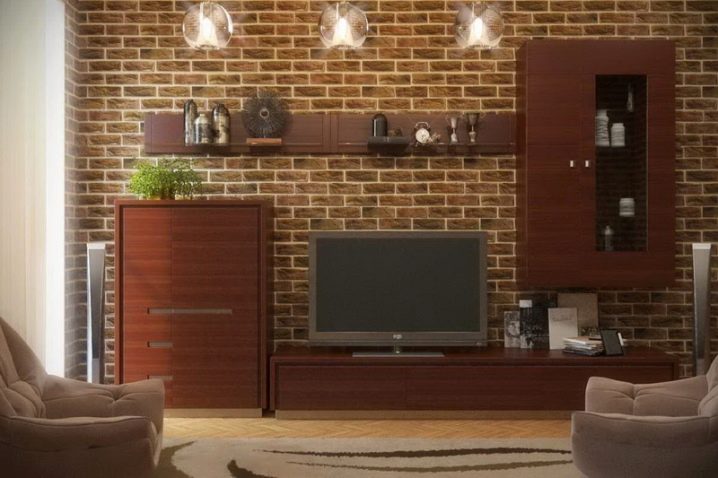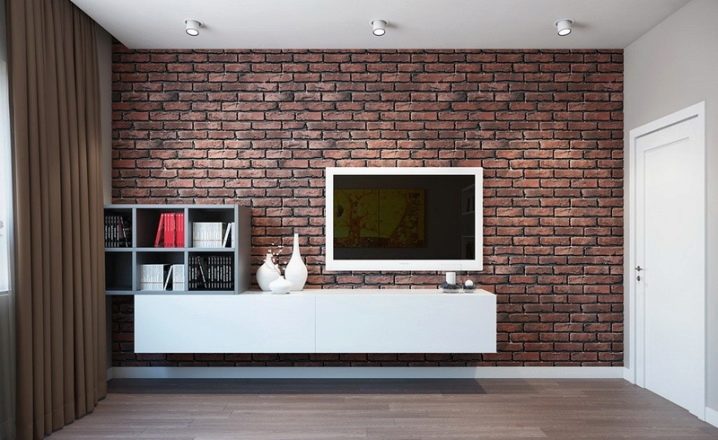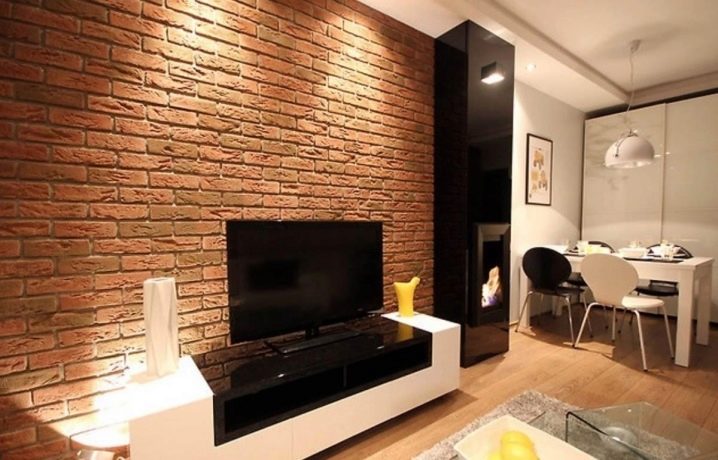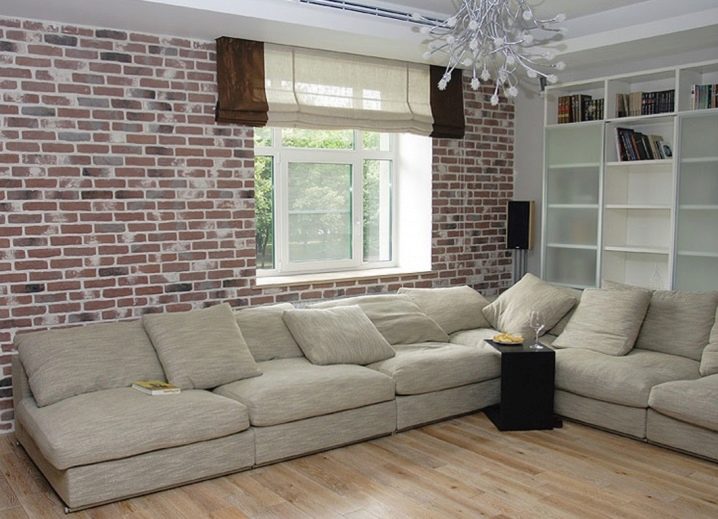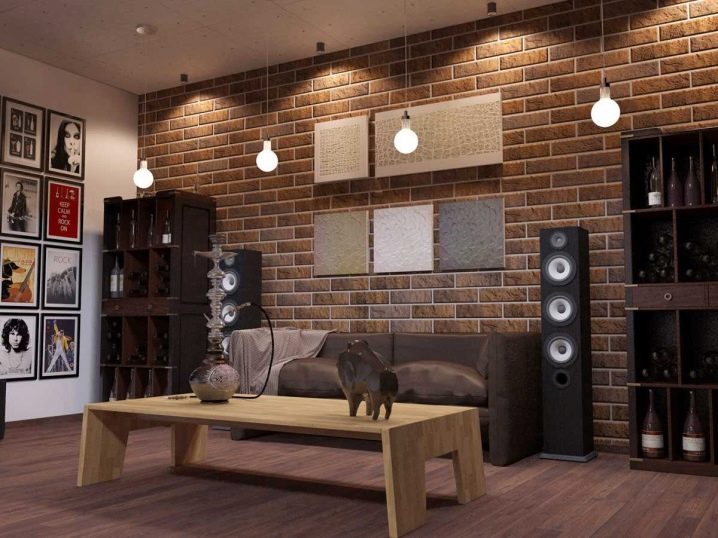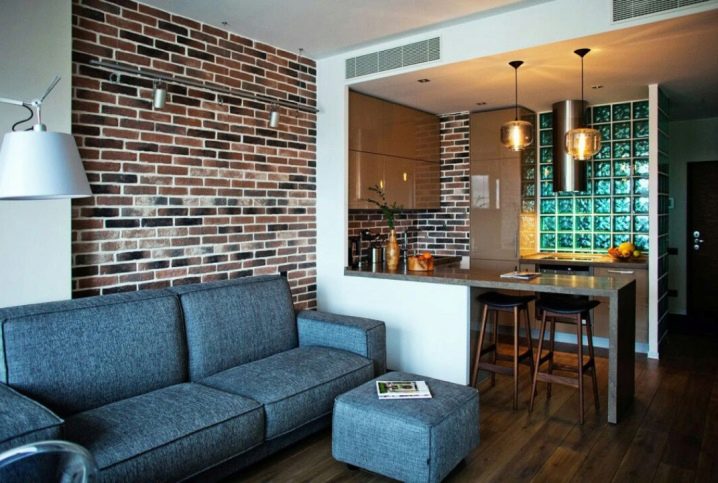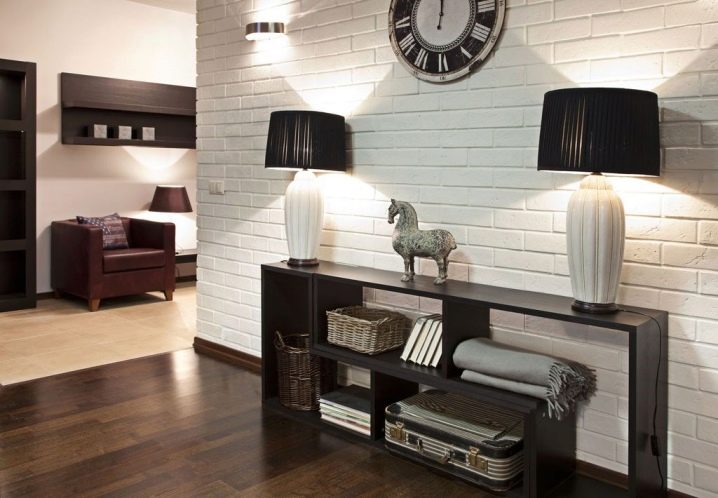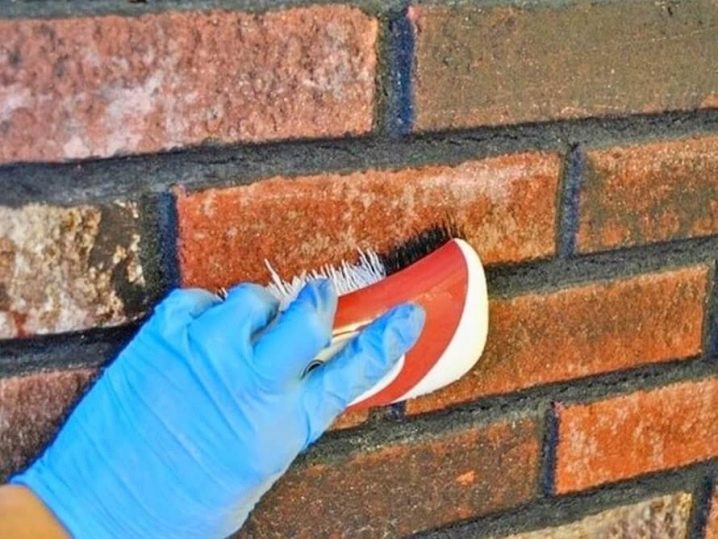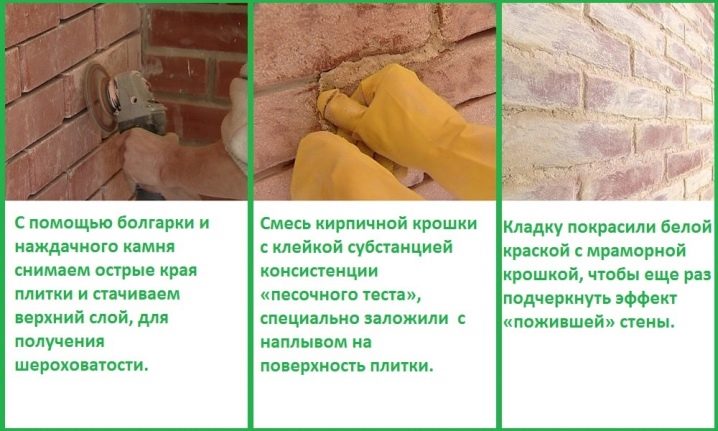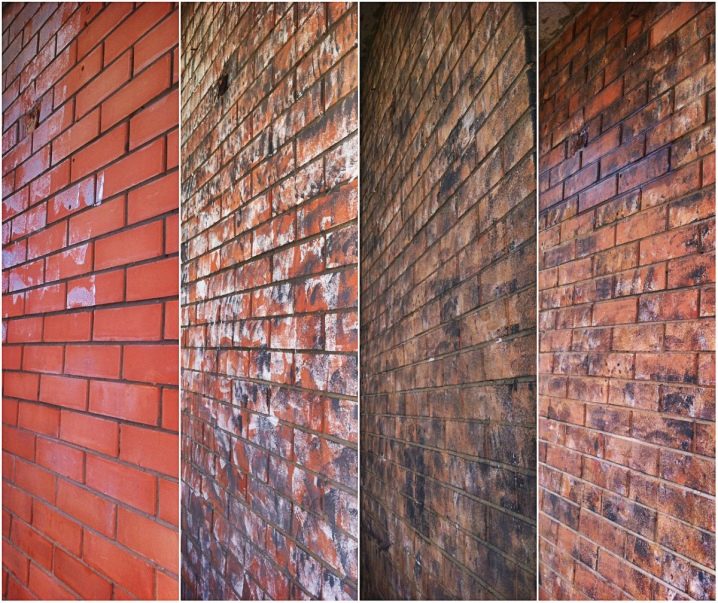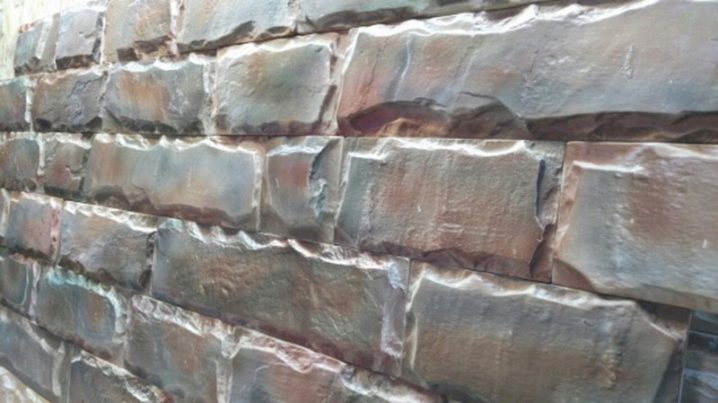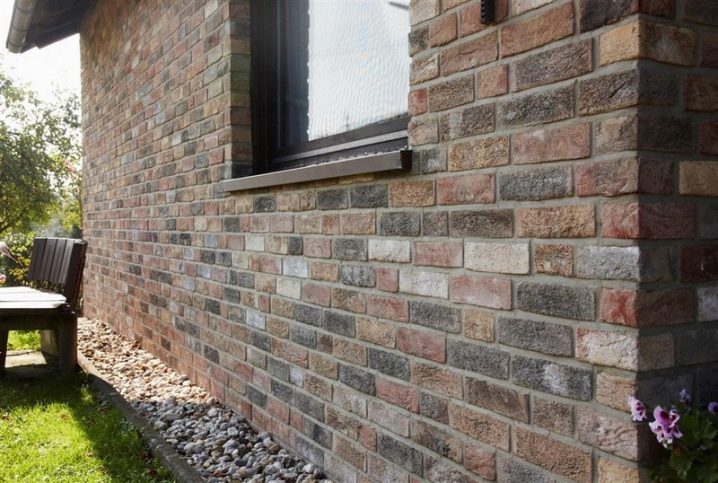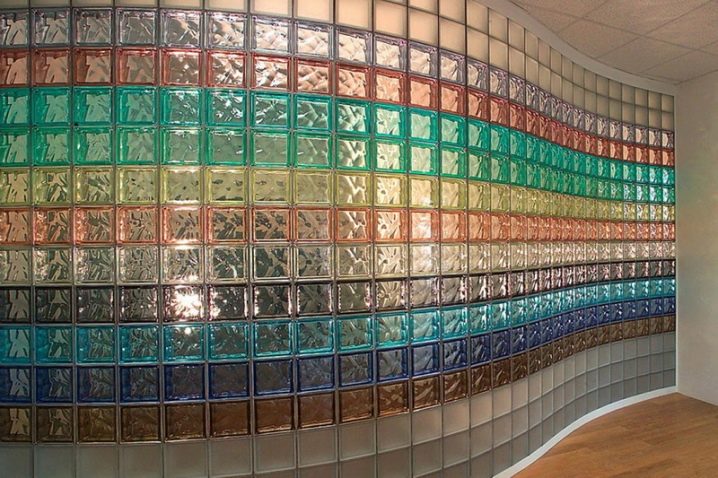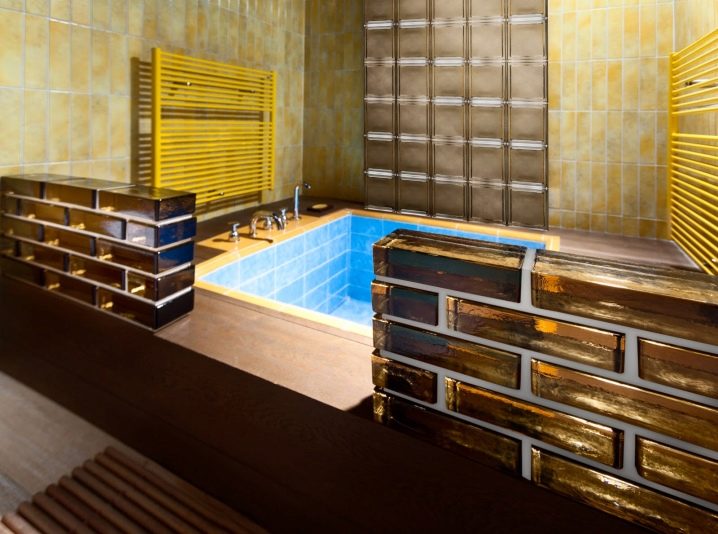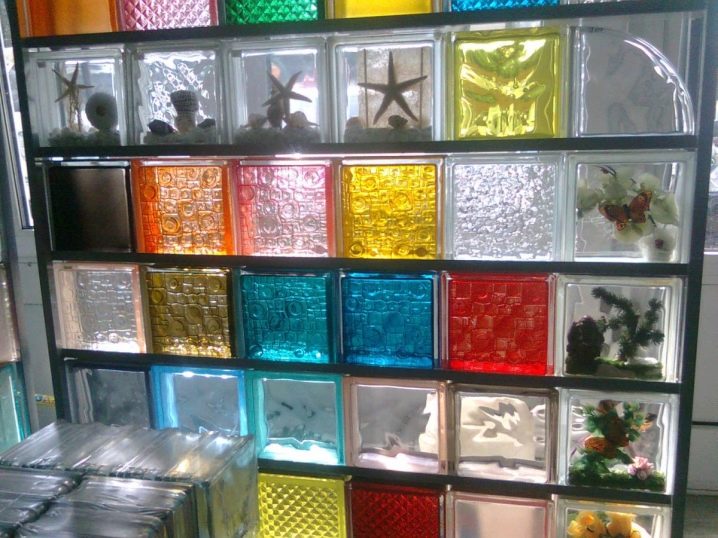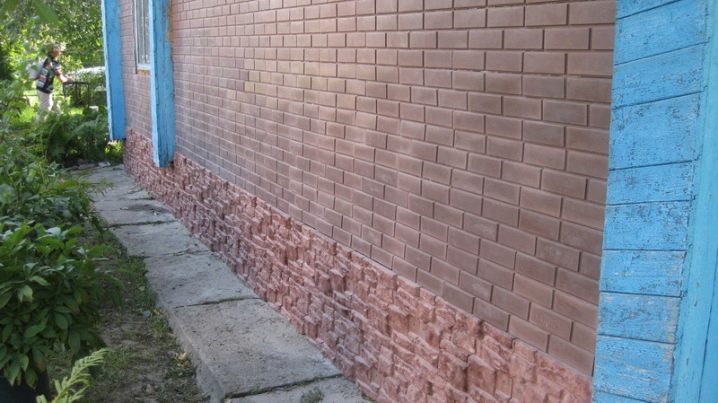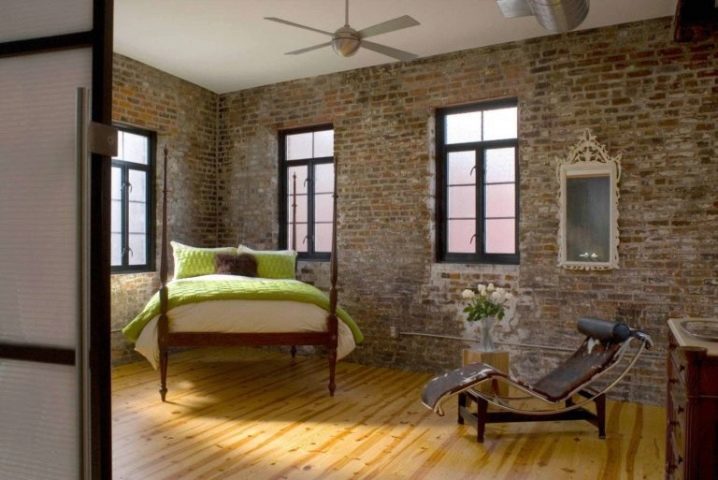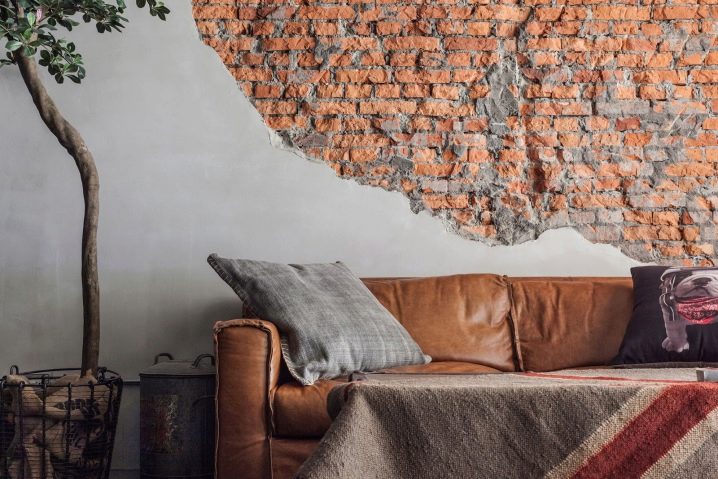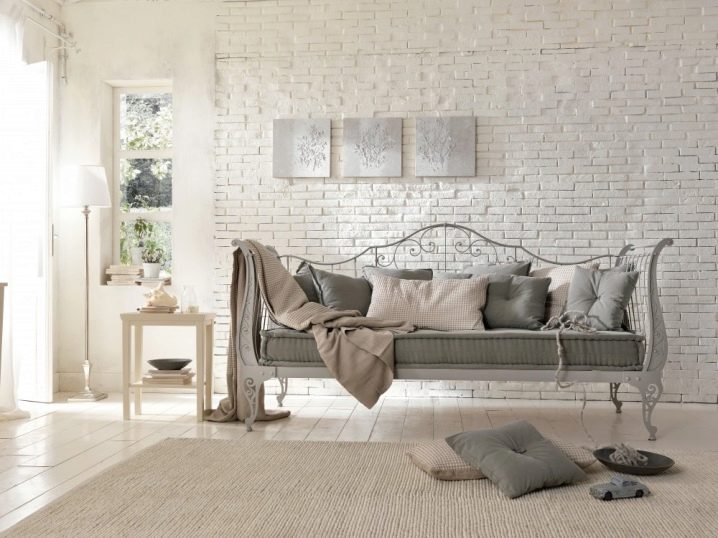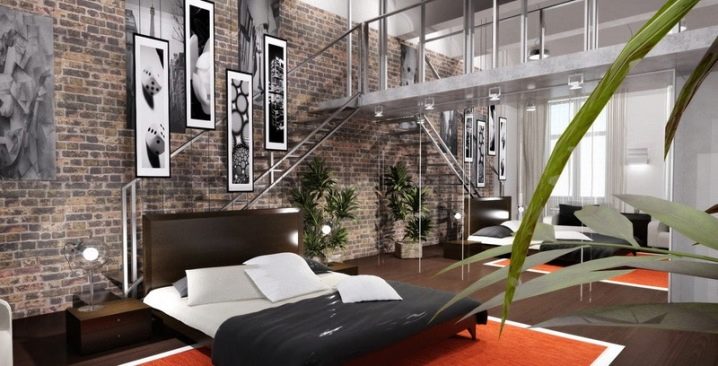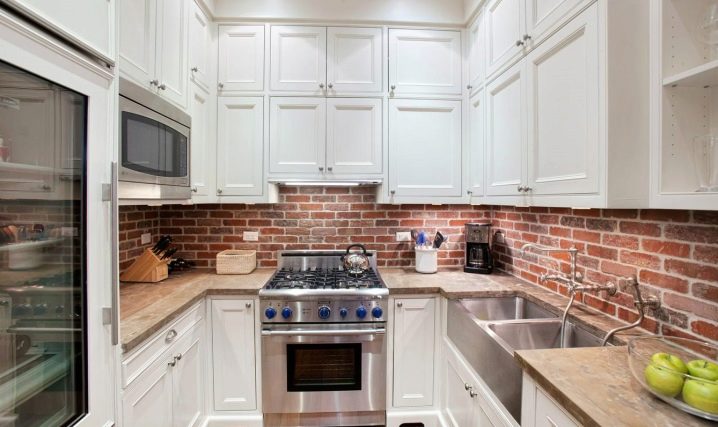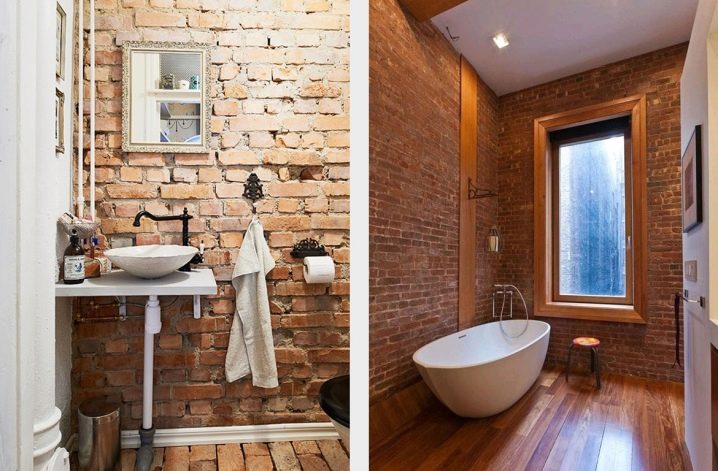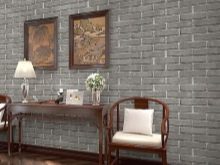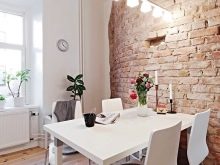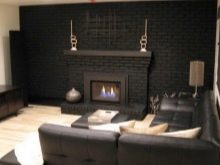Features and varieties of decorative bricks
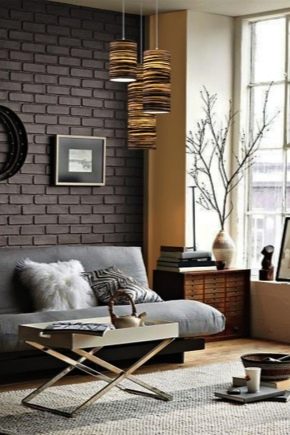
Each building and finishing material has its own specific features. This fully applies to decorative bricks. However, many people are not well aware of its features and characteristics that allow you to make a competent choice.
Special features
The brick surface of the wall subconsciously suggests the thought of reliability and invincibility, of the good quality of the structure. From her and breathes comfort. But the classic brick is inferior to more modern materials, and in some cases we have to give it up. There is, however, a good way out of the situation.It consists in covering a wall made of a different material with decorative brick.
It is possible to apply a similar covering both from within, and outside of the room. The choice of a particular variety depends on the place where the finishing will be performed. The manufacture of decorative bricks for interior walls is made using gypsum and materials based on it. But if you choose finishing materials to decorate the external walls, it is desirable to give preference to the composition of cement mixtures. Most often, the stone is imitated with molding plaster of the GF10 modification.
Admittedly, this material is quite expensive. However, the fee is justified by the fact that the structures are durable and long-lived. Also, alabaster or gypsum putty mixture can be used instead. In some cases, decorative bricks are made by hand in order to save money and get the perfect product for their needs.
Benefits
Decorative brick surpasses other finishing materials:
- its strength;
- stability in various weather conditions;
- minimum care requirements;
- no need to paint the surface;
- fire and temperature resistance;
- thermal security of the building;
- aesthetic characteristics.
disadvantages
But it is important to understand that, along with the positive aspects, the decorative brick has its own weaknesses. It is quite expensive and does not forgive mistakes when laying. This material, despite all the efforts of engineers, is still distinguished by a large specific gravity. It is smaller than that of building brick, but larger than that of a number of other finishing materials. The handling of decorative brick requires experience, certain skills and care, so it is sometimes even appropriate and beneficial to turn to professionals for installation.
Kinds
Developed a lot of options to create a chic external and internal appearance of the house. To reduce the cost of decorating the surface helps the use of aged brick. The visual effect created by him, with unique chips and a range of colors, will delight almost everyone. But the problem is that the factory-made ceramic aged brick costs a lot of money. Therefore, in some cases it is obtained independently.
Yes, the technical characteristics of such a product is inferior to corporate samples. However, if only an external sense of similarity is required, this flaw can be ignored. In skillful hands, even the cheapest bricks of the grades M125, M150 or M200 can be transformed into a kind of decorative. Bad geometry from lack becomes advantage. At the same time, the mechanical qualities of the products, if done correctly, will be on top.
Sometimes the front side of a ceramic brick is studded to form an expressive relief. For this work it is recommended to use a pickaxe. Then a dye is applied to the same side (dipping the bricks themselves into a special container). They are then left to dry.
Aging itself will require:
- a set of hammers of different sizes;
- Bulgarian;
- chisel;
- sandblasting machine.
There is also an alternative solution, in which a used brick is used, and the facade is covered with a composition that has, along with decorative, also protective functions. They begin with the purchase of a full-fledged brick, which must be cleaned on the front side of the grinder from the grinder.Then special chips are applied with the help of a mallet, the blocks themselves are placed on a mortar. The same solution is used for plastering. The prepared wall is covered with facade paints, achieving the original effect due to the variety of colors; then it is covered with matt varnish.
Over time, the surface will still, of course, fade and fade. But this problem is solved simply: at the right time only use a special paint. To postpone this moment, you must immediately cover the surface with hydrophobic compounds. They will help the clutch to keep the original look longer. But before choosing a particular option, it is better to consult with experts. It is important to understand that the "real" artificial finishing brick is completely different from the standard wall sample.
For the manufacture of this material is used:
- concrete;
- water;
- sand;
- coloring components;
- hardening additives.
This mixture is mixed very carefully, and great attention is paid to the accuracy of the selected recipe. Manufacturers of colored, dark and light wall bricks are equally trying to keep the chemical composition of their product secret. Therefore, consumers can only focus on the appearance of the product.And it can be extremely diverse. Outwardly old brick covered with exquisite chips, as if worn and uneven on the outside, was widespread.
But some people prefer a smooth decorative block that looks like clinker. In any case, if manufacturers aim to get a detailed drawing with the drawing of small features, they use a more complex form. Therefore, for the elegance of the image and excellent appearance have to pay extra. It is important to understand that any artificial brick only imitates a “real” brick surface, and in fact remains a tile, the thickness of which rarely exceeds 1.5 cm. This material is cheaper than clinker and does not cause harm during use.
It is necessary to clearly understand one more thing: at all profitability of the decorative brick made by the hands it seldom differs in special quality. And the main reason is related to the fact that forms sold in public and technical documentation for them are carefully guarded by large firms. After all, they are not interested in reducing the number of buyers of finished products.But the choice of decorative bricks produced by large factories is large enough to “close” all needs. Moreover, the recipe and methods for processing raw materials, of course, are also a trade secret.
Decorative bricks of industrial manufacture can also be refractory. For domestic purposes, refractory materials based on silica or a mixture of aluminum with silicates are widely used. When choosing such units, one should pay attention primarily to the level of heat capacity. Fireclay and magnesite are suitable for coating outside the furnace furnace chambers, for lining various heating boilers. Stove workers with experience clearly give preference to chamotte rather than to silica bricks, because:
- the latter is very hard, poorly cut or cracked;
- similar material is heavy;
- despite its hardness, it is also fragile;
- manufacturers often deviate from the requirements of GOST, applying individually developed specifications.
But still, a first-class fireclay has only a narrow “niche” - facing foci and chimneys. For decorating other parts of the room, alternative materials are required.Among them is worth noting glass brick. This decorative coating is becoming increasingly popular, and experts rate it as very promising. Glass blocks help to save on heating, they are even resistant to strong moisture.
A wide range of colors, external textures allows both to shade already existing interiors, and to create an original composition from scratch. But even the best glass bricks are not strong enough. This means that it is necessary to carefully monitor their transportation, storage and stowage. Otherwise, the surface is easily damaged. If you comply with all technical requirements, a transparent "brick" will provide:
- excellent sound insulation;
- excellent sanitary and environmental characteristics;
- resistance to everyday mechanical stress.
Glass brick is perfect for the bathroom. Its properties allow the use of blocks as the main building material. Aftercare is relatively easy, washing is not a problem. Most designers recommend using glass bricks to create chaotic compositions.Such elements fit well into the decor, decorated in a modern style.
Glass bricks are used for interior decoration also because it is convenient to replace. If the individual blocks are damaged, then you can replace only them without touching the rest of the wall. The difference between glass brick modifications is expressed in:
- relief;
- mechanical fortress;
- chemical composition;
- manufacturing method.
A brick made of glass is much heavier than glass blocks. Also, this product costs more, and it has less variety of colors - but during work, you can change the look of products. Without any problems, you can create a suitable pattern for yourself. Since glass bricks are heavy, from the very beginning it is worth calculating the load that is created. Not in all houses the foundation and supporting structures will withstand it, so the calculation will help to avoid a rash step.
Manufacturers of decorative glass change color by adding special pigments. Technologies have been developed that allow to paint both the surface of the material and its entire thickness separately. A colored type of glass brick can be obtained by heat treatment (with simultaneous exposure to alkali metal oxides, silica sand).The proportion of reagents used determines not only the tonality of the finished product. It shows how strong the product is, whether it will become dense or relatively light.
In addition to glass, concrete decorative bricks can also be used. It can be operated for a long time, while maintaining an elegant appearance. Imitation of a natural material is often achieved with an uneven surface layer. Stone can be used in the design of walls and other surfaces in a private house, and in a city apartment. Even those who have only basic bricklaying skills will be able to do all the work.
Suitable styles
Decorative brick, from whatever material it is made, fits only to certain design styles. Often it is used to decorate rooms in a loft style. This is almost perfect in this case: it is difficult to find the best way to imitate an old-fashioned brick wall. If everything is done correctly, it creates the feeling that not modern housing is around, but a building constructed at least in the first half of the twentieth century (if not earlier).It is important to understand that even the most elaborate loft is visually aggressive and can tire over time.
Therefore, the design must be diluted:
- floor mats juicy flowers;
- flower arrangements;
- expressive soft furniture.
Do not assume that decorative brick is suitable only in houses decorated in the style of a loft. Where the owners prefer country or its various variants, decorated with antique, this material can also be used. In this case, use the most light brick, trying to lay it as beautifully as possible. This is not surprising, because the concept is also different - now the premises are made not under the “old factory or warehouse”, but under a cozy rural house.
To enhance this impression, you can apply massive beams of dark natural wood. But any artificial parts to enter into the composition is not recommended, they immediately violate the integrity of the interior of the country. This style can be used for a kitchen apron and for walls in separate rooms. The use of decorative bricks is also appropriate in high-tech style. But the approach should, of course, be different.
In this case, interiors are created with geometrically verified relationships. It is recommended to use very pure colors, and not to mix different colors. The ideal solution are rectangles of gray or white colors. This solution is suitable for rooms made in the business style. Minimalism and concise forms - this is what we should strive for in this case.
Decorative brick can be applied in the English style. There is already rough, it is emphasized rural material does not fit. It is necessary to use neatly made blocks that will be perfectly combined with natural wood. The English room is made in a single color scheme. This circumstance must be taken into account even when choosing decorative elements to frame the fireplace.
How to choose?
Even if the decorative brick corresponds to the main style, you should not rush to paste it on the wall. It is necessary to pay attention to other characteristics of products. Thickness and other dimensions are determined individually, but we must remember that too thick elements will be too heavy. Choosing a decor for the bedroom, you need to give preference to coatings with a discreet appearance.If you violate this requirement, you can get pretentious, too intense emotional environment.
Decorative bricks designed for a kitchen apron should be as resistant to moisture, fat and heat as possible. Smooth blocks are preferred, the surface of which is resistant to detergents. When you plan to use a brick for decorating compact areas around the entrance, you need to choose such products that can be used in fragments. Otherwise, the design becomes cumbersome and heavy, it looks too uncomfortable. But besides the design characteristics. it is required to consider also especially technical moments.
So, clinker is appropriate to use where the humidity is high. It is used in the bathroom, in the kitchen, as well as in the design of facades. Low water absorption by the coating is a very important property, thanks to it the life of the products is very large.
There are three main surface formats:
- glazed;
- matte;
- with a pronounced relief.
Plaster decorative brick is not recommended for use in wet areas. The exceptions are products with a special protective layer.To trim the corners, use specially prepared figured details. Regardless of the humidity in the room, you can use polyurethane panels, reproducing the relief of the "real" brick. Such products are recommended for the sanitary unit and the kitchen group.
Regarding the preferred colors, designers recommend using:
- combination of red and brown colors;
- white and red tones (these are the most mass shades);
- a combination of brown and sand colors;
- combining white with sand and gray tones.
Plaster decorative brick can be very large. Sometimes it is the same size as a double ceramic brick. The advantage of this material is affordable cost. Ceramic material is often used even on the street. It is sufficiently resistant to frosty weather.
Examples in the interior
Red decorative brick, even if it is not too saturated color, perfectly combined with the “white” room. Especially in the case when the furniture is also painted in the most light colors. Gray decorative brick fits predominantly in more strict and laconic interiors.Black decorative material is used primarily as a contrast. Best looks black wall in a bright room.
How to choose a decorative brick, see the next video.
